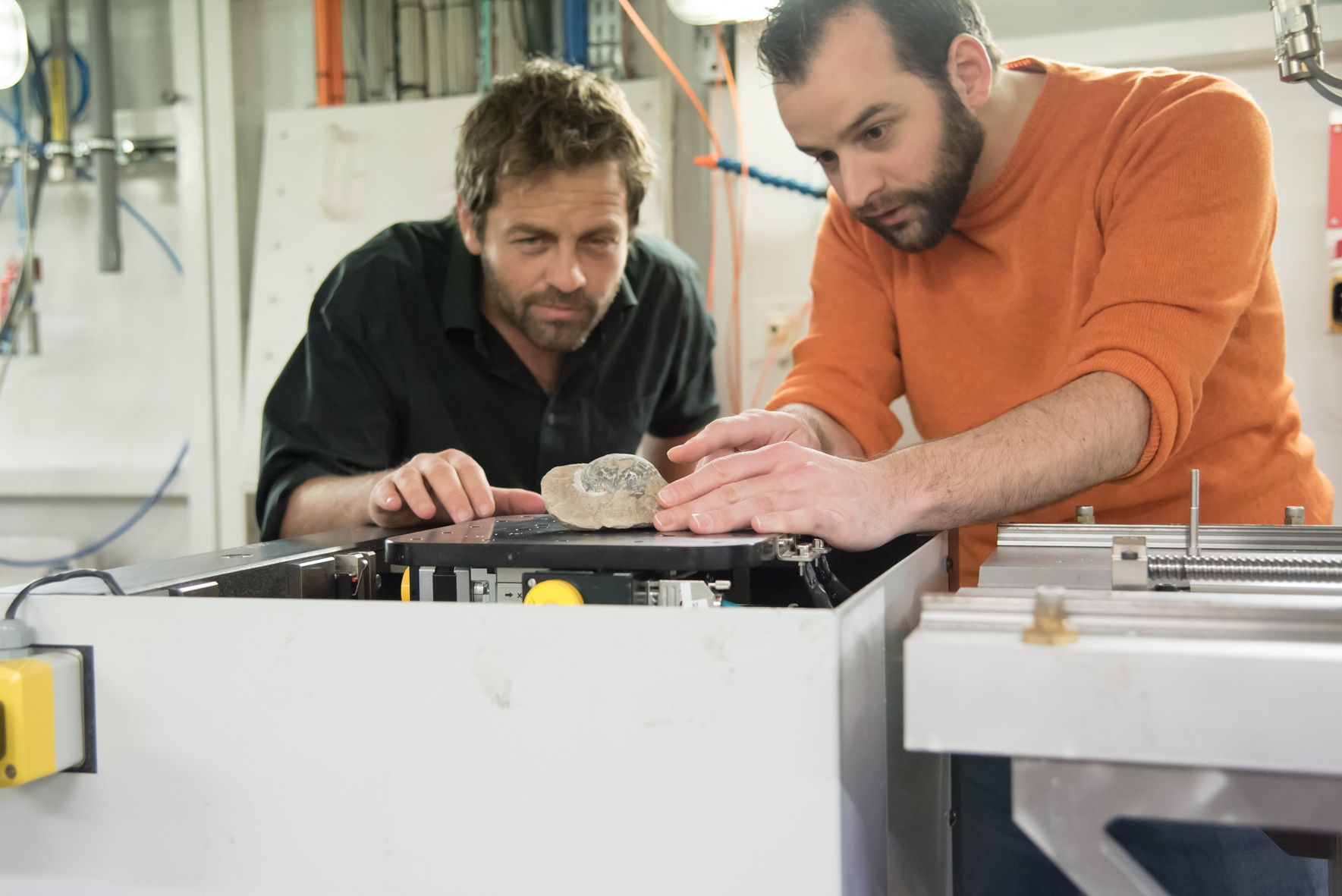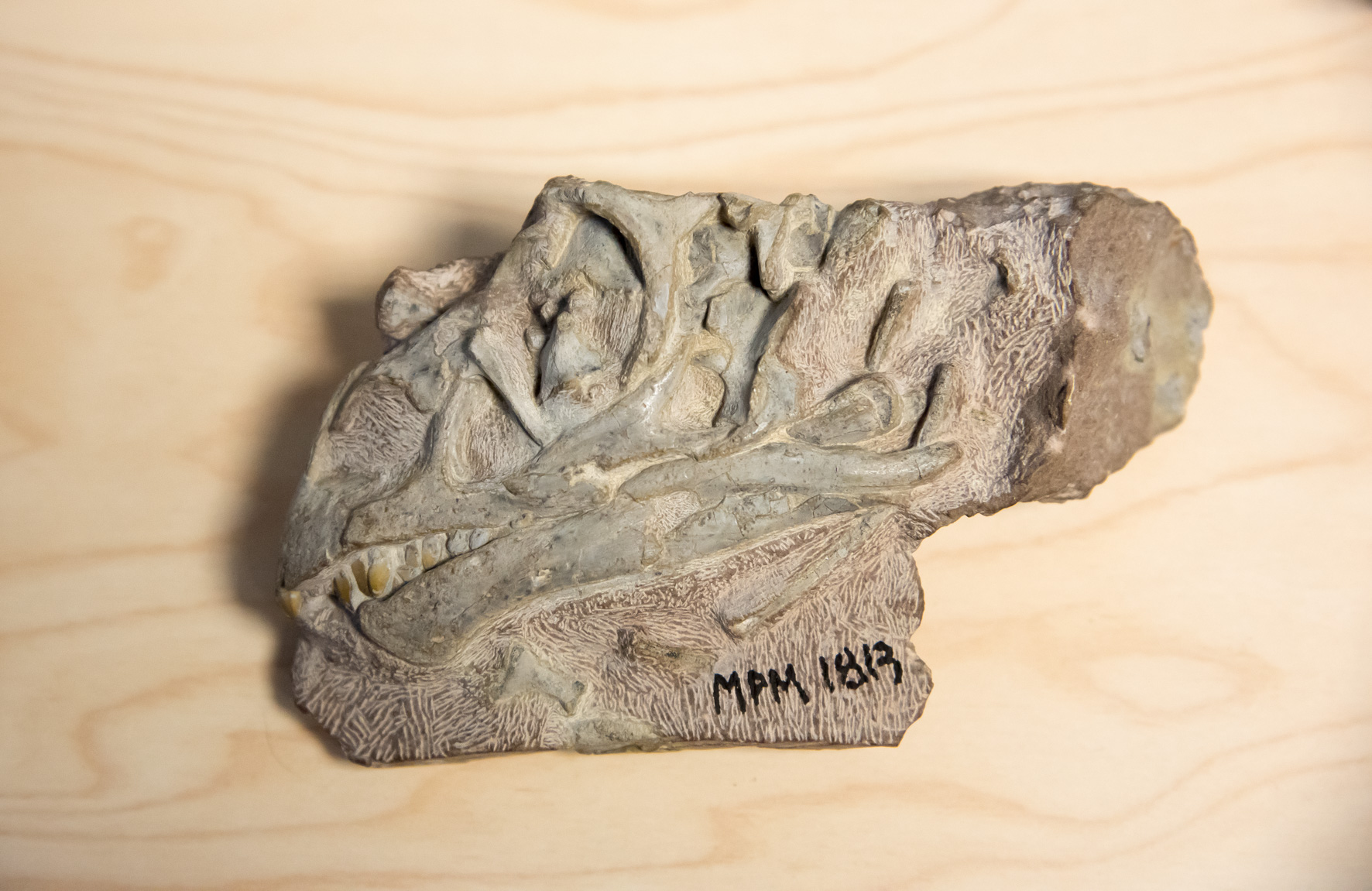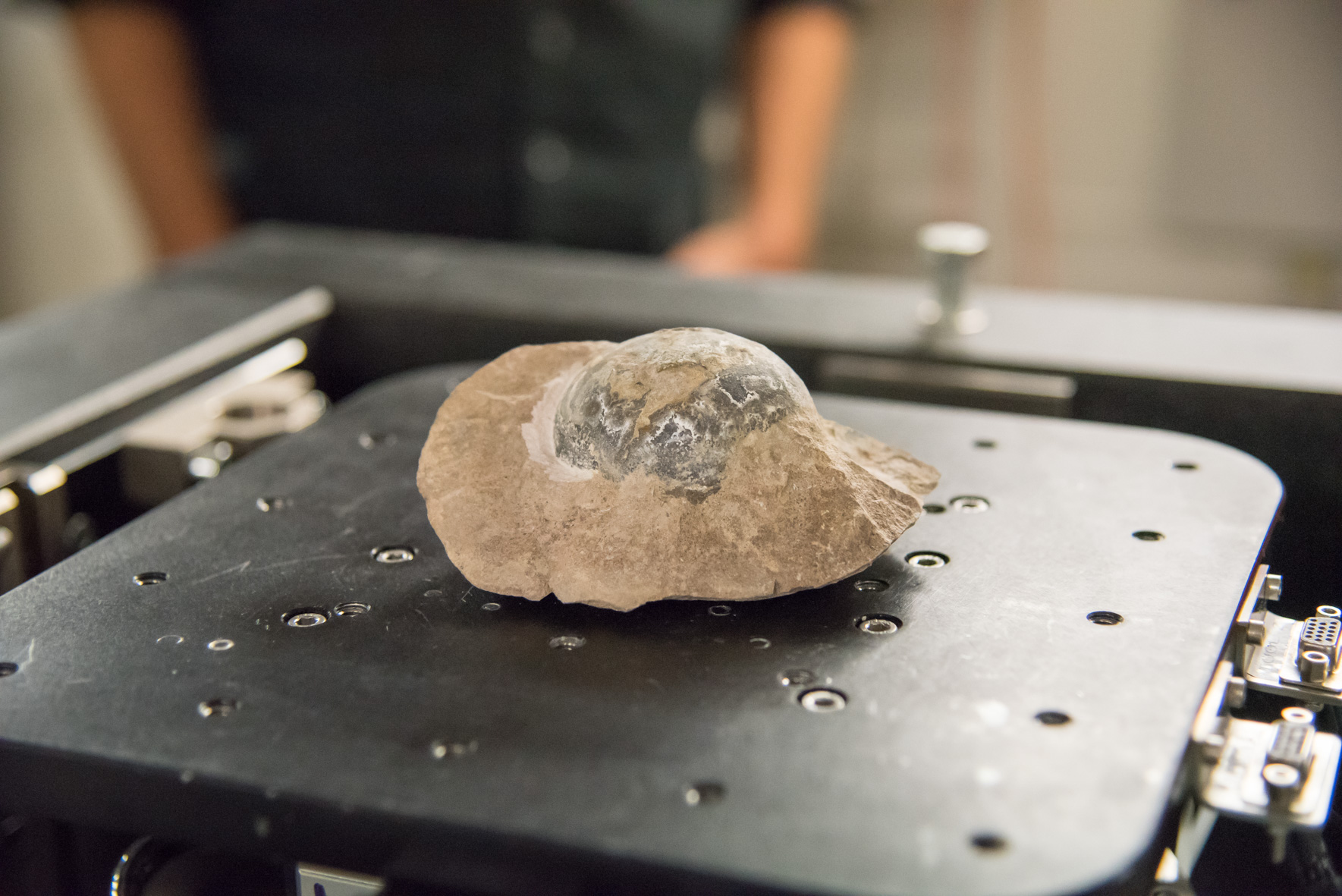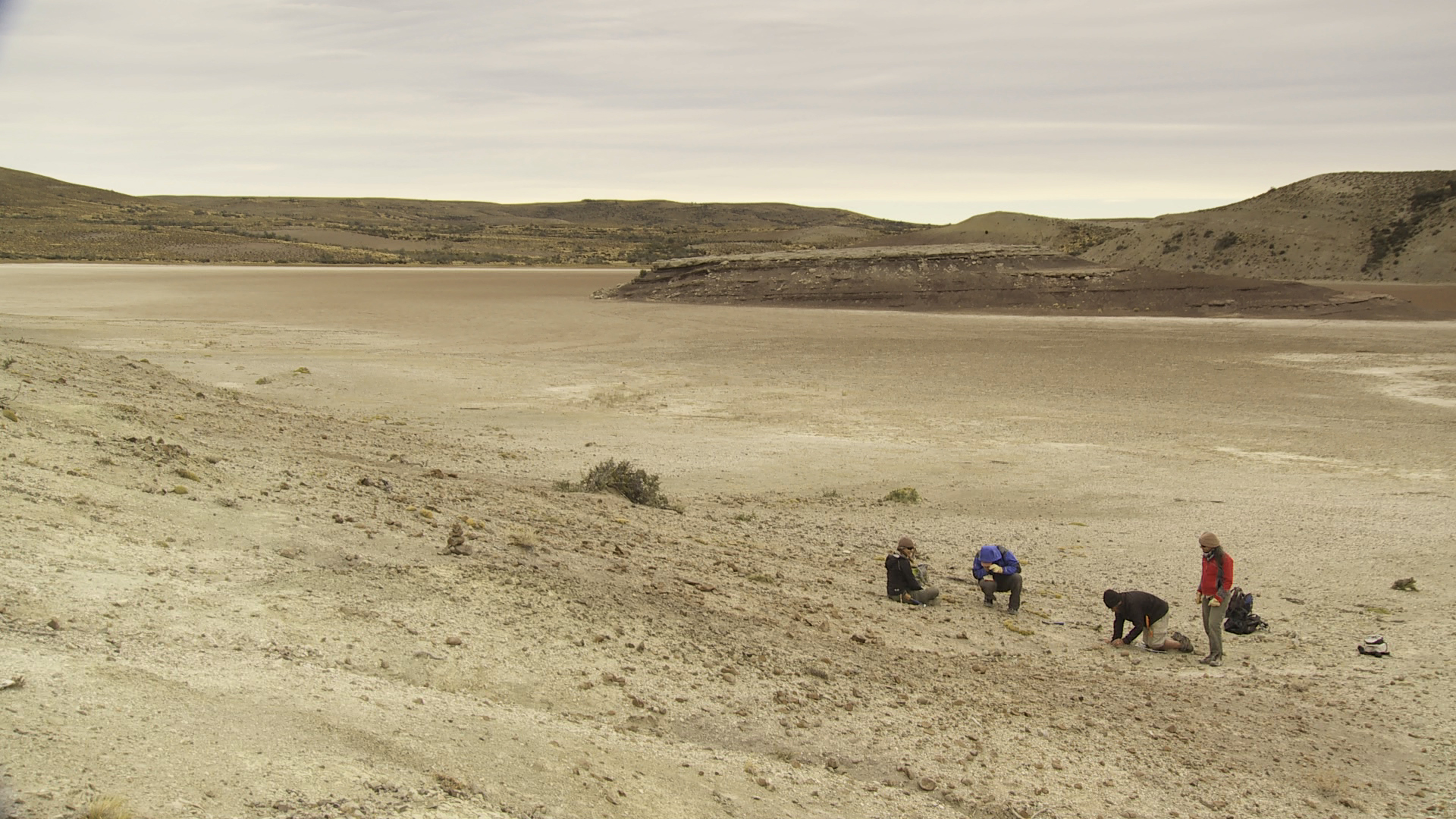- Home
- News
- General News
- Scientists try to...
Scientists try to unveil how dinosaurs became giants with synchrotron X-rays
12-03-2017
Unique dinosaur eggs and a juvenile of the same species have travelled from their native Argentina to the ESRF to be studied with the powerful synchrotron x-rays. The goal: to understand more about the relatively unknown development and growth of the species and find out how dinosaurs evolved into giant creatures.
30 dinosaur eggs, one baby and a juvenile of prosauropod Mussaurus patagonicus, a primitive herbivorous dinosaur that lived about 200 million years ago, during the Late Triassic, an ancestor of the giant dinosaurs. For the first time, all these unique and rare fossils have travelled from their native Argentina to the ESRF, the European synchrotron, Grenoble, France, to be studied with the powerful X-rays of the synchrotron. The goal: to understand more about the relatively unknown development and growth of Mussaurus and find out how dinosaurs evolved into giant creatures.
It is the first time that such a collection of dinosaur specimens (from embryonic stage through to juvenile) are being studied in a synchrotron. Diego Pol, vertebrate palaeontologist, researcher at the National Scientific and Technical Research Council (CONICET), at the Museum of Paleontology Feruglio, in Trelew (Argentina), well known for many important fossil discoveries made during his field expeditions across Patagonia and on other continents, thinks that the ESRF can provide many answers about the growth of the Mussaurus, but also of dinosaurs in general and in particular the transition from basal sauropodomorphs to sauropods. “There has never been before such a range of fossils of the same species at different stages, so it is a really unique opportunity”, he says.
 |
|
Diego Pol (left) and Vincent Fernández (right) placing the sample in the experimental hutch on ID19. Credits: ESRF/C. Argoud. |
The origin of sauropod dinosaurs is one of the major landmarks of dinosaur evolution but is still poorly understood. How did dinosaurs evolve into the largest creatures on Earth, like Brachiosaurus, Diplodocus or Brontosaurus? Palaeontologists have known for decades about the beginnings and endings of a group of dinosaurs known as the Sauropodomorpha. Scientists also knew about a related group called prosauropods, dinosaurs that were intermediate in size and posture, like Mussaurus patagonicus. What they didn't know was exactly what steps filled in the transition between prosauropods and sauropods. This drastic transformation involved major skeletal modifications and Mussaurus is very close to this transition and the origin of sauropods. That’s why retrieving valuable data concerning the growth of this dinosaur species, the development of its skeleton and skull, can provide critical information to understand the evolutionary origins of sauropods.
 |
|
Picture of the skull of a juvenile Mussaurus patagonicus, of roughly 2 years of age. Size of the skull: 10cm long. Credit: @ESRF/C.Argoud |
In the 1970s, palaeontologists in a desertic spot in central Patagonia called El Tranquilo Formation discovered the whole skeleton of a baby dinosaur, which was later called Mussaurus (for its size similar to a mouse) patagonicus. It wouldn’t be until 30 years later that researchers, led by Pol, went back to the original spot to find new fossils. The first fossil Pol found was a nest with several eggs. “The feeling of finding something so unique is absolutely fantastic”, he explains. But he and his team were in for a surprise: the site lodged 80 eggs, as well as a skulls and skeletons of juvenile Mussaurus, of roughly 2 years of age. The site seemed to have hosted a reproductive colony, where dinosaurs kept the younger ones during their most vulnerable stage.
 |
|
Picture of one of the eggs. The larger eggs are spheroid, with a long axis ranging from 55 to 63 mm. Credit: @ESRF/C.Argoud. |
Some of the eggs were found covered by a cemented-like sediment around them. Pol doesn’t expect to find embryos in all of the samples he has brought, as it could be that with time some of the embryos decomposed and there is nothing to be seen inside. Among the fossils there is one egg which cracked, and palaeontologists saw bones of the embryo inside straight away. They tried to do a tomograph in their home lab, but, despite seeing the embryo, they couldn´t distinguish the different parts.
Pol had followed for a while the synchrotron use for investigation of palaeontology specimens. “When the studies using synchrotron radiation started, around a decade ago, it was eye-opening to see all the possibilities that we had from then on to find out what is inside fossils without destroying them”, Pol says. “Before that, the chances of discovering what was inside the eggs were very slim, as we couldn´t cut the specimens”.
 |
|
The field site where the eggs were discovered, El Tranquilo Formation, Central patagonia. Credit: @Conicet-Documental. |
Through a common contact, he got in touch with Vincent Fernandez, a scientist at the ESRF who was, at the time, a post-doctoral researcher in the University of Witwatersrand, in South Africa. They thought there were many potential answers to the evolution of dinosaurs in those eggs, so they tried to get them to the ESRF.
Over the last two decades, the ESRF has developed unique worldwide expertise in palaeontology, designing non-invasive techniques specifically for palaeontological studies. If fossil teeth, bones and skulls are examined on a daily basis by the ESRF’s team of palaeontologists, the scanning of such a range of dinosaur eggs of the same species, so well preserved, remains exceptional. For this experiment, explains Vincent Fernandez, “the ESRF allows to do long distance propagation phase contrast micro-tomography on a large sample at high energy with a dedicated sample stage. It allows to produce 3D data for anatomical studies of these embryos and to image regions of particular interest at higher resolution, such as the cranium, to quantify the ossification pattern throughout the development of these embryos.”
During four days and nights, they scanned the 30 eggs, the skeleton of the baby and the skull of the juvenile at ID19 ESRF beamline. “It’s exciting and very promising. It’s like a second discovery” says Pol, examining the first scans and what is probably the femur of an embryo. But it won´t be until they can treat all the data collected, that they will, hopefully, unveil the secrets of Mussaurus and try to answer the mystery of the evolutionary origins of giant dinosaurs.
References
-Pol D, et al. 2007. Skull anatomy of Mussaurus patagonicus (Dinosauria: Sauropodomorpha) from the Late Triassic of Patagonia. Hist. Biol., 19(1): 125-44.
-Otero, A., & Pol, D. 2013. Postcranial anatomy and phylogenetic relationships of Mussaurus patagonicus (Dinosauria, Sauropodomorpha). Journal of Vertebrate Paleontology 33: 1138-1168.
-Cerda, I., Pol, D., & Chinsamy-Turan, A. 2014. Osteohistological insight into the early stages of growth in Mussaurus patagonicus (Dinosauria, Sauropodomorpha). Historial Biology 26: 110-121.
Text by Montserrat Capellas Espuny
Top image: Picture of the whole skeleton of a baby Mussaurus patagonicus, of roughly 1 month old. Credit: @ESRF/C.Argoud



